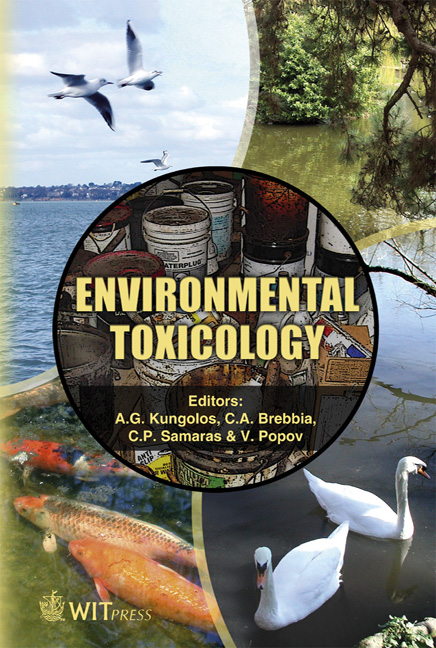Study Of Metals In Leached Soils Of A Municipal Dumpsite In Tampico, Tamaulipas, Mexico: Preliminary Results
Price
Free (open access)
Transaction
Volume
10
Pages
7
Published
2006
Size
716 kb
Paper DOI
10.2495/ETOX060261
Copyright
WIT Press
Author(s)
P. F. Rodríguez-Espinosa, D. Chazaro Mendoza, J. A. Montes de Oca, G. Sánchez Torres E. & A. Fierro Cabo A.
Abstract
The Zapote dumpsite measures 420000 m 2 and is 28 years old; an estimated 2.5 millions tons of waste have accumulated on the site (household waste, clinical waste, commercial waste). The thickness of the waste is 3 to 9 meters. Since operations began, no control regulations have existed on the residues received. The Zapote dumpsite is located within a salt-marsh between a system of channels and river lagoons of brackish water, located in a tropical sedimentary environment in the urban zone of Tampico, Tamaulipas, Mexico. Recently, the Zapote has been closed and work is presently underway in its rehabilitation since a geo-environmental perspective. The present investigation integrates information of preliminary results of metals (Pb, Ni, Cd, Cu, Mg, Fe and Al) contained in sediments that underlie the Zapote dumpsite. In laboratory research the metals of the sediment were correlated with the metals contained in samples of leachate from the Zapote dumpsite. The concentration of metals Pb, Ni, Cd, Cu, Mg, Fe and Al were analyzed in samples of sediments that underlie the body of the dumpsite in layers of 10 cm, reaching a depth of 1.5 m under the interface waste-soil. The results denote high concentrations of metals in layers that are in contact with waste that decreased until reaching 60 to 80 cm of depth. The proportions of the concentrations of metals studied in the soil are comparable with that leached, until layers of 60 to 80 cm of depth are reached, and are then lost in the deepest layers. The high plastic characteristics of clay layers have stood in the way of metallic contaminants in sub layers of the Zapote dumpsite. The results were correlated with metal concentrations of natural and anthropogenic sediments of the region. Keywords: metals in soils, sediments in a dumpsite, metal concentration.
Keywords
metals in soils, sediments in a dumpsite, metal concentration.





